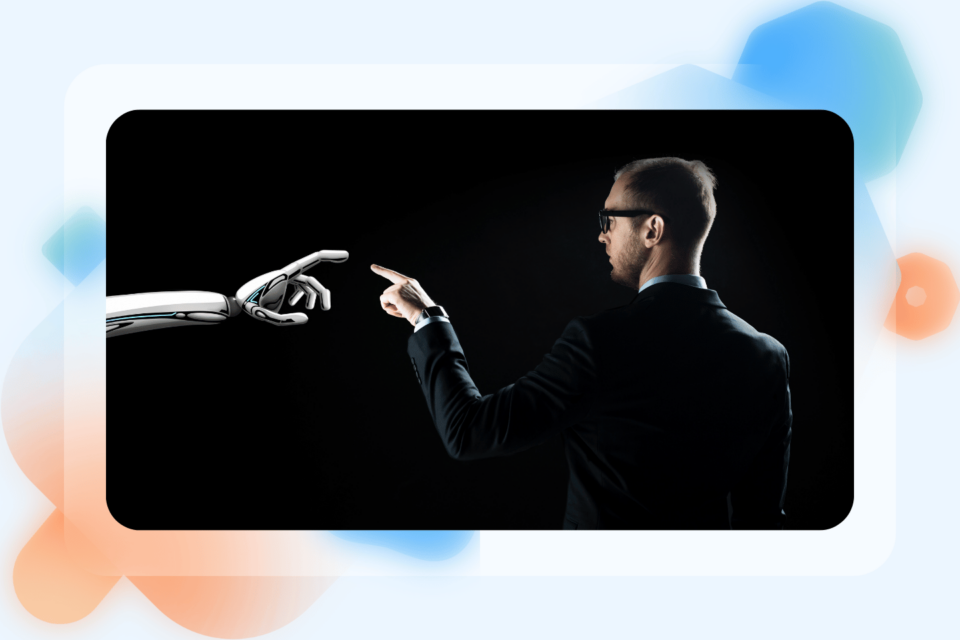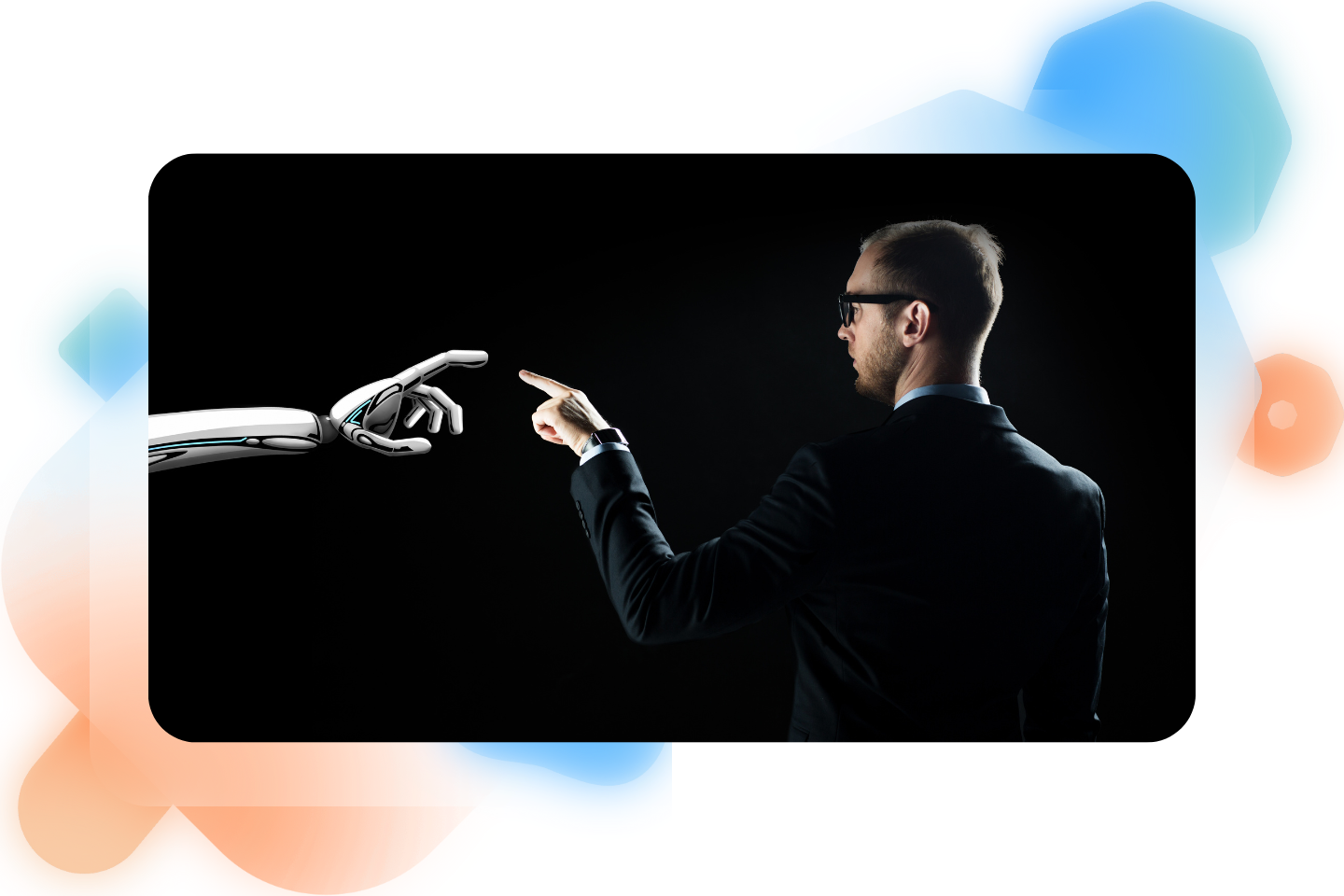Customers demand top-notch support. But the harsh truth is traditional methods don’t cut it anymore—and sometimes they can even be a more expensive and inefficient. Additionally, businesses lose more or less $75 billion annually due to poor customer service.
Another possible scenario is this: You may still be able to offer that kind of customer support with your existing agents, but there are chances that:
- You’ll overwork them
- You face sky-high running costs
- Your customers slip away because of slow response times
Want to play smarter? Here’s the answer: Leverage the power of hybrid customer service. It’s actually designed to solve your customer service challenges without breaking the bank.
Read on to learn more about the strategic model for interacting with clients.
What is hybrid customer service?

Hybrid customer service blends traditional customer service with the convenience and accessibility of AI-powered tools.
It aims to deliver a seamless customer experience, across multiple channels (phone, email, live chat, and social media) so that customers can interact in the way they prefer. As per research, more than 70% of consumers want consistent experiences across multiple platforms—and they would switch if they didn’t.
The true power of the hybrid service is that it leverages the strengths of both human agents and technologies. Because while they excel at complex problem-solving, empathy, de-escalating conflicts, and providing tailored solutions, AI technologies, such as chatbots, are incredibly efficient at handling basic inquiries, sending instant responses, and automating repetitive tasks.
5 reasons why you should consider hybrid customer service

Sadly, the challenges of traditional customer service are real. And hybrid customer service helps some companies solve that. So, here are five reasons why you should consider making the switch:
1. Flexibility makes a big difference
Hybrid customer service is more than just offering support across multiple channels. Here’s what we mean—customers today have diverse preferences. Customer expectations vary from person to person.
Think of a busy professional who prefers chatting over calling. Or a tech-savvy customer who enjoys troubleshooting issues on their own through a self-service portal. So, with this kind of customer service, you’re not just providing support—you’re actually creating personalized experiences that boost overall satisfaction.
2. Adaptability to your business growth
The hybrid customer service model is built to grow with you. As your business expands, so do your customer count and their support needs. AI-powered tools like chatbots and knowledge bases are your hybrid customer service representatives that can handle an increasing volume of inquiries and feedback when your support capacity needs the opportunity to expand alongside your audience.
3. Optimization of resource allocation
Hybrid customer service jobs are about working smarter, not harder. It helps you get the most out of your current team and budget. Your human agents are your rockstars so think of this as your way of freeing them from repetitive tasks. Instead, your support employees can focus on strengthening connections or turning frustrated customers into loyal customers. What you can do is to automate those mundane tasks using AI technologies.
4. 360-degree view of each customer
Customers worldwide attribute 96% of their loyalty to customer service. 360-degree customer views make it easier to give exceptional support. The holistic power in hybrid customer service is combining AI with human expertise. It doesn’t have to be one way or the other
If a customer reaches out with a not-so-simple query. No worries! Your hybrid customer service representative accesses your customer history instantly. They can address the customer by name, offer customized solutions, and even anticipate future questions. That’s AI-powered tools analyzing customer data in real-time, pulling up relevant information like purchase history and human agents tailoring their responses.
5. Proactive approach
Imagine the impact of resolving issues sooner rather than later. It’s like you have a crystal ball for customer satisfaction, right?
Here’s how hybrid customer service takes the reigns:
- Track customer interactions, behavior, and feedback across all channels.
- Advanced AI algorithms can then take this data to the next level.
- Once you have these insights, you can begin to help customers even before discovering they have an issue —offer helpful tips, suggest solutions, or simply ask how they’re doing.
This kind of proactive support goes a long way in building customer loyalty and increasing retention.
How to create a successful hybrid CS strategy for your business

Ready to build a customer service dream team? Start with this—your step-by-step guide to crafting a hybrid CS strategy.
Conduct market research
Before diving headfirst into hybrid customer service, take a step back and get to know your customers intimately. Start by zooming into your customer data.
- What channels do they prefer?
- What are their common pain points?
- What kind of support do they expect?
Know your audience and what makes them tick—that way, you can strategize accordingly.
Don’t stop—conduct win/loss analysis too
Send surveys to your existing customers to gauge their satisfaction with your current support channels, identify common issues, and gather feedback on what they’d like to improve.
Also, speak with customers who’ve recently renewed or cancelled their subscriptions. Understanding their support experiences can be enlightening. Those with formal and rigorous win-loss analysis programs report increased win rates of up to 50%.
Be where your customers are
Yes, it’s good to offer multichannel customer support for an integrated experience. But don’t try to be just present everywhere. There’s a difference between simply being there versus actually having a solid presence.
Pick the channels that make the most sense for your audience and your business. It might be email, live chat, social media, phone support, or a combination. The key is to be where your customers are. So, let’s say your ideal customers are tech-savvy millennials who are always on the go. Putting your support team to stand by the phone all day? It’s a bad idea.
Embrace automation
Start by analyzing your existing customer service workflow. Which work activities are repetitive, time-consuming, and error-prone? These are prime candidates for automation. AI-powered tools like chatbots and virtual assistants come in handy. Use them to handle routine tasks like password resets, order tracking, and basic troubleshooting.
Transform users into self-service superheroes
This not only reduces your workload but also provides convenience for your customers. Empower your customers with self-service tools and transform them into problem-solving champions—92% say they’d use a knowledge base to help themselves if it’s available.
A well-organized knowledge base, FAQs, and tutorials make it easy for them to find answers on their own. And you’ll see a significant reduction in support tickets—a win-win for everyone.
Human support team structuring
The heart and soul of any great customer service experience is your team. But don’t expect every agent to be an expert in everything. Provide regular feedback to your agents, both positive and constructive. Offer coaching and training opportunities to help them continuously improve their skills. Even with automation, you need to reserve human support for complex issues, build relationships, and provide personal attention.
The outsourcing advantage
We’ll explain why customer service outsourcing is actually a good step in creating a successful hybrid CS strategy. First of all, it’s often more economical to outsource support functions than to build and maintain them in-house. You can save up to 70% on employment costs. Outsourcing some or all of your customer support services and operations is a strategic move that can save you time, money, and resources.
LTVplus is your ideal partner here. The dedicated customer service team (like a true extension of your team) is equipped with cutting-edge support tools and AI. You get all the benefits without the high investment. The core principle of a perfect hybrid customer service— taking advantage of both human interaction and automation. Overall, you’ll be tapping into a pool of highly trained agents, advanced technology, full customer service teams and proven processes.
Tips and best practices for implementing hybrid customer service

Now that you have the plan, here are some tips to make sure your hybrid customer service strategy is a success:
Have a customer-centric mindset
Always put your customer’s needs and preferences first. Personalize every interaction with your customers through the use of their data and the customization of your communication to meet their specific needs and preferences. You can even use this to guide your choice of channel.
Embrace AI—but don’t forget the humans
Simply put, blend bots and brains for a super-powered system. AI-powered tools can carry out routine office work, but more complicated issues require the empathy and problem-solving skills of human agents. Find the right balance between automation and human touch.
Empower your team
Your dream CS team consists of both people and digital tools. So, invest in training them both. Create comprehensive training programs for your support team. This should cover product knowledge, soft skills, and how to effectively use your new hybrid system. It’s important that your agents are skilled in using AI-powered tools and can seamlessly transition between channels.
Be transparent
If you’re using AI-based tools, let your employees and customers know. This can help them manage their expectations and avoid misunderstandings.
Ensure your messaging has a consistent tone
It’s so frustrating and a magnet to a lot of support tickets if the information is inconsistent across your channels. But when all your channels are aligned, customers receive reliable, clear answers. So, use concise language, check up and set expectations for response times.
Your customer support with hybrid solutions

Hybrid customer service is here to stay. It’s changing the game for digital businesses like yours empowering you to only give the best customer experience. By blending the best of human touch with the efficiency of automation, you can create profitable, efficient customer service.
But if building a successful hybrid strategy is hindered by time, resources, and a whole lot of expertise. And that’s where we [at LTVplus] come in. Here, we’re not just another customer service outsourcing company. We’re your partners in customer service success. Our experts are proficient in the latest tools and so can easily integrate with your existing systems and processes.
Contact LTVplus today and provide only top-notch support to your customers.




